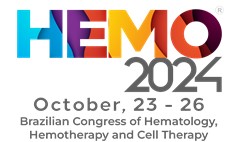
XVI Eurasian Hematology Oncology Congress
More infoMyeloid Sarcoma (MS), also known as granulocytic sarcoma or chloroma, is a rare extramedullary tumor consisting of immature myeloid cells. It can occur as an isolated entity, concurrently with Acute Myeloid Leukemia (AML), or as a relapse manifestation. In cases where myeloid sarcoma presents without prior hematologic malignancy and with normal peripheral blood counts, diagnosis can be significantly delayed, leading to disease progression. Recognizing MS as a potential early sign of AML is crucial to initiating timely treatment. A 48-year-old female with a history of hypertension and a prior L1 vertebral compression fracture in 2016 presented with new-onset lumbar pain in 2024. Lumbar MRI revealed a paraspinal soft tissue lesion at the T12‒L1 level, prompting further investigation. The patient’s hematologic parameters were within normal limits, with a white blood cell count of 8290 µL, hemoglobin of 13 g/dL, and platelet count of 400,000 µL. The lesion was surgically excised, and histopathological examination confirmed myeloid sarcoma. Following this diagnosis, hematology consultation was requested, and bone marrow aspiration and biopsy were performed. Although the blast percentage was only 7%‒8%, flow cytometry findings were consistent with AML. PET-CT revealed hypermetabolic activity in the paravertebral region with a maximum SUV of 10.94 and abnormal uptake in both humeri and femurs, suggesting possible bone marrow involvement. The patient was diagnosed with AML and started on 7+3 induction chemotherapy with cytarabine and daunorubicin, along with radiotherapy for local disease control. This case highlights the diagnostic challenge of isolated myeloid sarcoma in the absence of peripheral blood abnormalities and emphasizes the importance of early hematologic evaluation. PET-CT played a crucial role in detecting subclinical bone marrow involvement, guiding treatment decisions. Recognizing myeloid sarcoma as a potential precursor to AML is essential for timely diagnosis and intervention, as early systemic chemotherapy can prevent disease progression and improve patient outcomes.






